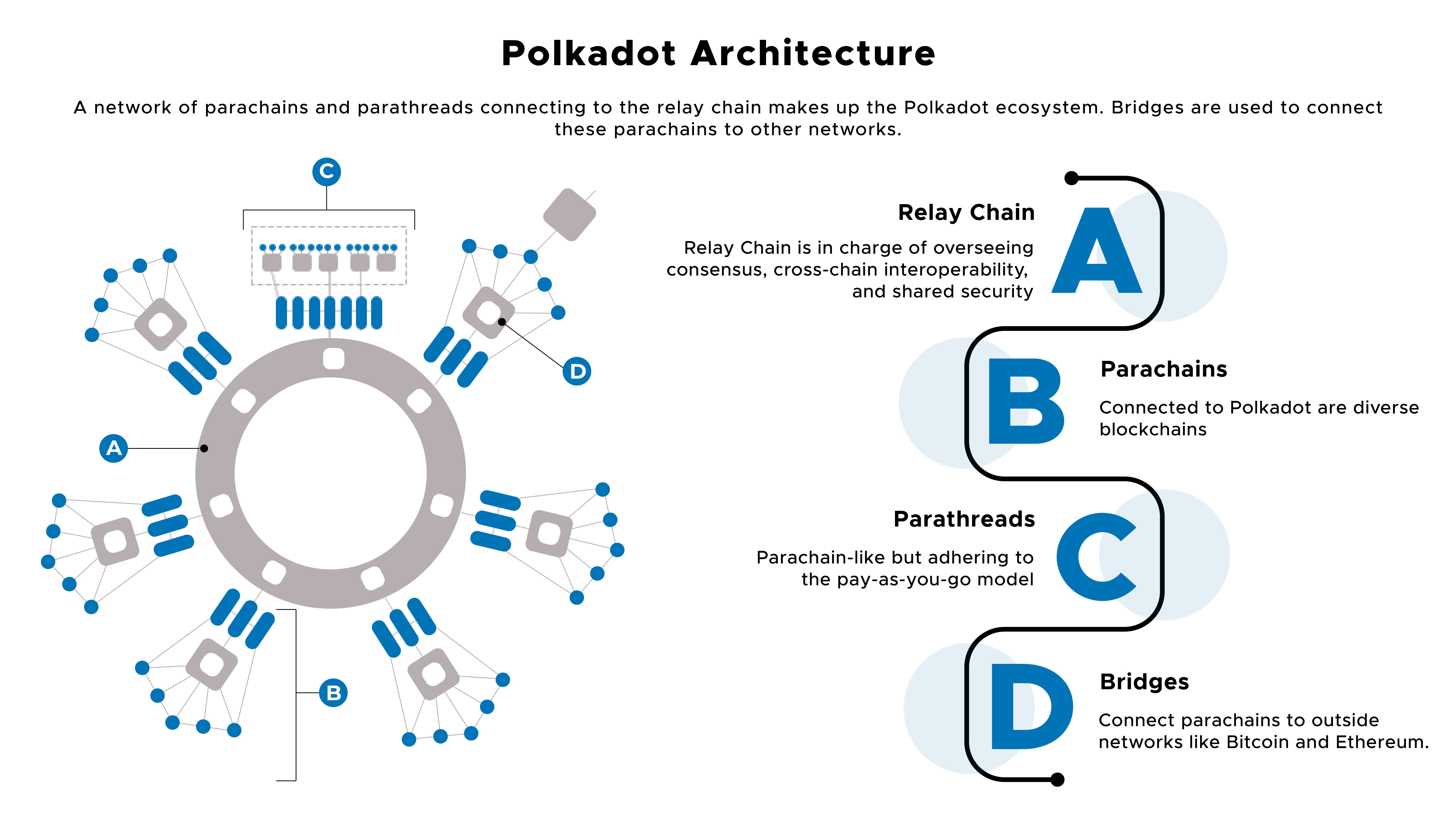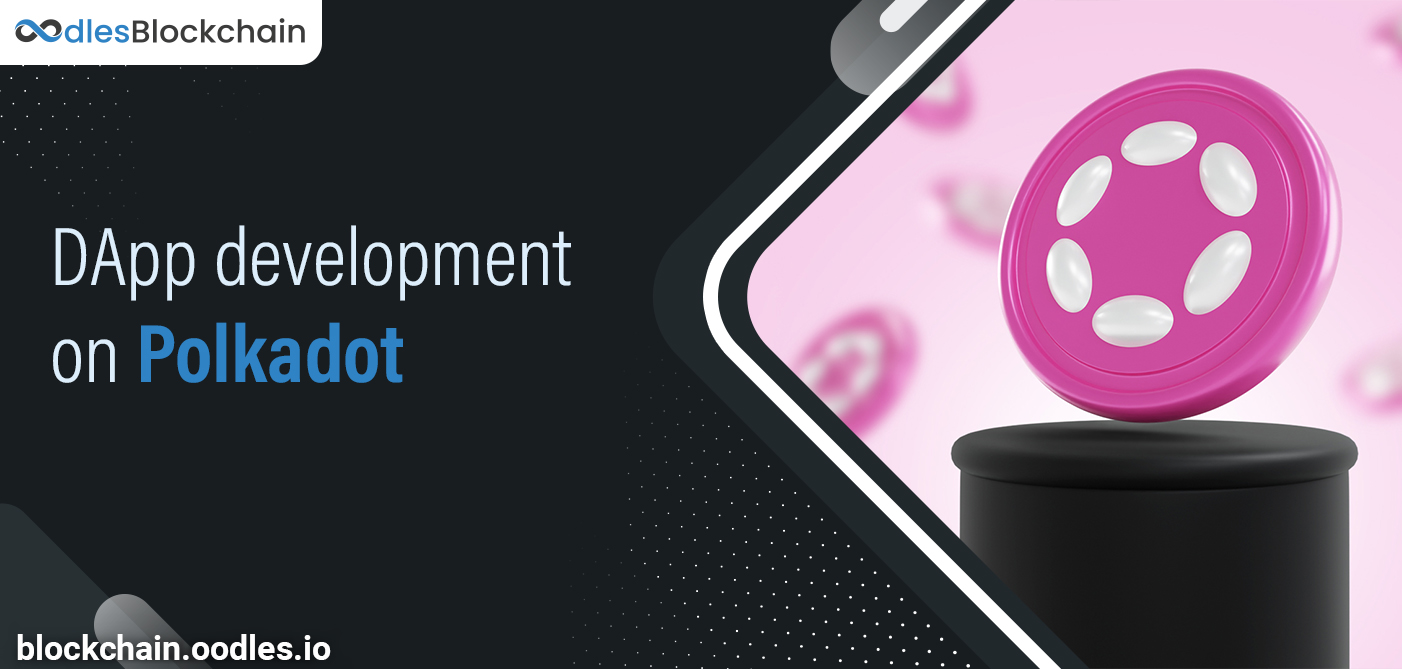-
For customers to receive better blockchain networks tailored to their use cases, evolution in the blockchain sector is crucial. Interoperability continues to be a major concern even though most second-generation blockchains, like Ethereum, can address the issues of first-generation blockchains.
With its capacity to link several heterogeneous blockchains created as Parachains, Polkadot offers a solution to the interoperability problem. Through bridges, Polkadot blockchain development services further facilitate interoperability between Parachains and external chains like Ethereum.
Polkadot bridges serve as a connecting layer that enables businesses to communicate with and access real-world or non-blockchain databases in addition to providing interoperability between Parachains and external blockchains.
With these advantages, Polkadot promotes the growth of the blockchain ecosystem and various dApps.
Let's examine the creation of smart contracts (dApps) and their implementation on the Polkadot Network.
Also, Read | dApp Development | Your Guide to Decentralized Applications
Why is Polkadot a Top-Notch dApp Development Platform?

Why we should use Polkadot a platform for dApp development and deployment is the key question. The top defenses are as follows:
All hosted parachains on the Polkadot network share the main chain's security.
- The use of parachain development greatly speeds up dApp development while allowing developers to concentrate on features and business logic.
- Any programming language that can be built into Wasm is supported by the Polkadot runtime environment, including natively compiled programs (such as Rust). With the WebAssembly interpreter, it is possible to construct the chain in any relevant language and on any platform. Due to the usage of Wasm or natively compiled languages, execution is faster than, for instance, on the Ethereum Virtual Machine. Combining the two executables helps prevent hard forks.
- More complex reasoning than smart contracts can be found in a parachain. It occurs as a result of a parachain being created using a complete programming language. A parachain can be used to construct a completely unique monetary system, a special system of fees, and DAO procedures.
- Since parachains may communicate with one another, multiple connected dApps can be developed on the same platform without running into scalability issues.
- Through the use of suitable parachain bridges, Polkadot enables collaboration with other blockchains and outside applications, thus, resolving the interoperability issue.
Also, Read | dApp (Decentralized App) Development | Increasing Importance
Why Develop dApp Smart Contracts with Polkadot?
A next-generation blockchain protocol called Polkadot makes it possible for different blockchains to communicate with one another.
A dApp on Polkadot can automatically communicate with other Parachains.
The Parachains are sophisticated layer-1 blockchains that enable communication between several independent blockchains and create a diversified ecosystem, upgrading the traditional method of siloed blockchains.
The following are some additional advantages of the Polkadot:
- With Polkadot, smart contract developers may use the shared security, governance, consensus, and scalability of the Polkadot relay chain.
- Polkadot reduces the hassle of optimizing any use cases by having high flexibility and the ability to develop the Parachain itself. It results in completely optimized and more secure services with zero downtime.
- Developers on Polkadot can make recurring updates on smart contracts, maintaining them in good working order and updating them in line with the newest technology.
- There is no need to assemble a network of miners or validators in order to use the powerful security provided by the underlying blockchain for smart contracts designed for Parachains.
Also, Read | A Compact Guide to Understanding Polkadot Blockchain
Tools and Technology for dApp Smart Contract Development on Polkadot?
To facilitate the development of cutting-edge web 3 solutions and dApps, Polkadot provides a wide range of tools, SDKs (software development kits), PDKs (Parachain development kits), testnet, and blockchain framework.
The network updates the resources and technologies to boost the effectiveness and relevance of the Polkadot ecosystem.
The most important tools and resources for the development process include tools like Substrate, Substrate developers docs, Substrate VSCode plugin, Substrate debug kit, and Diener, and programming languages like Rust, Go, C++, Typescript, etc.
Also, Read | Develop Parachain on Polkadot
Development of Polkadot dApps
Profit from Polkadot's heterogeneous sharding and ask us to create an effective and affordable dApp.
Whatever intricate feature you need, your app's data exchange and the transaction will be carefully planned and secure at Oodles.
- Public and private blockchain-based dApps
- Specialized logic design for businesses
- Engineering for secure extensions and utilities
- API and gateway development
- Blockchain to DApp integration
On the Polkadot network, our skilled blockchain developers develop various interoperable dApps as Parachains. Many public and private blockchains can use these dApps.

Our Offices
INDIA
Emaar Digital Greens, Sector 61,
Gurugram, Haryana
122011.
Welldone Tech Park,
Sector 48, Sohna road,
Gurugram, Haryana
122018.














